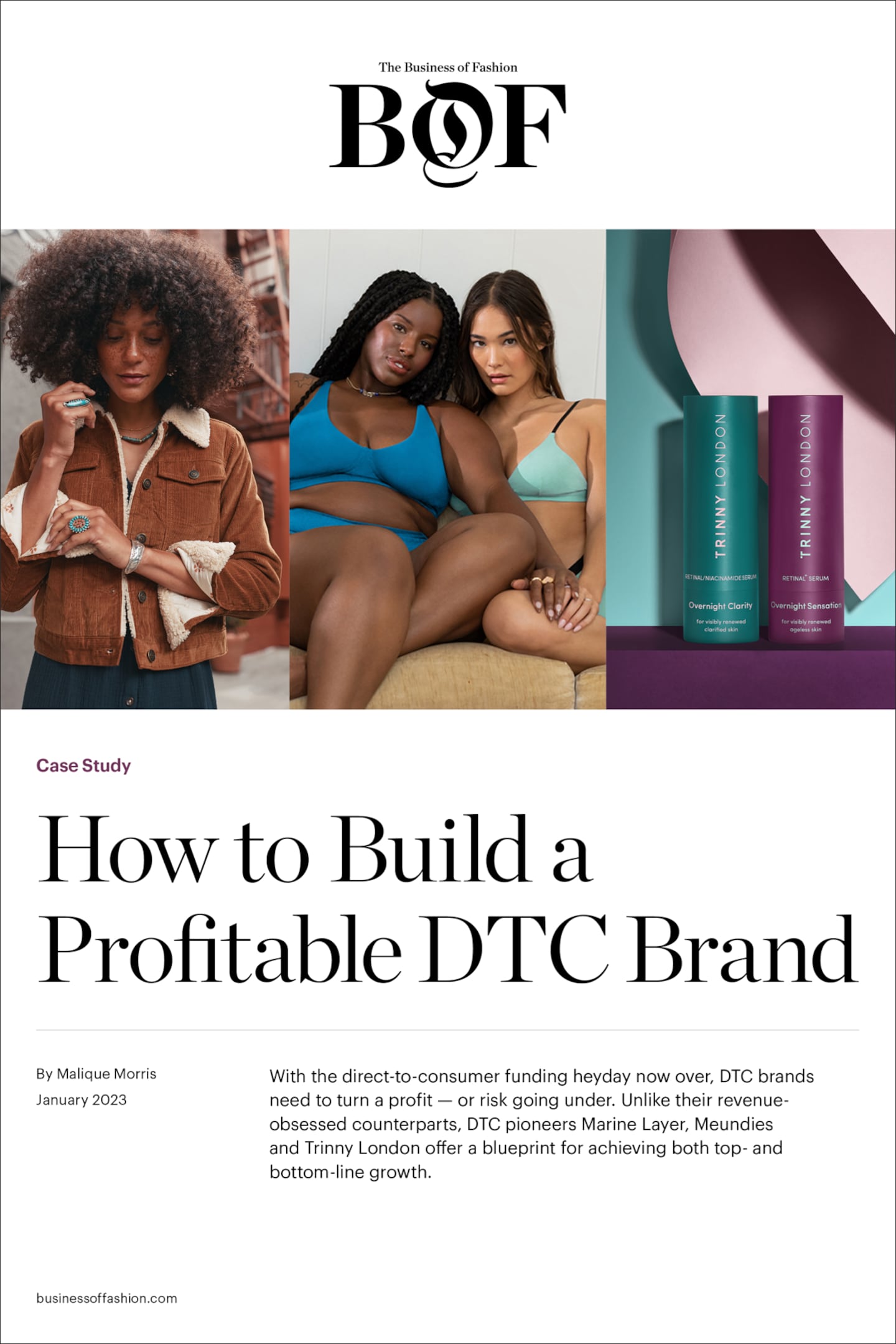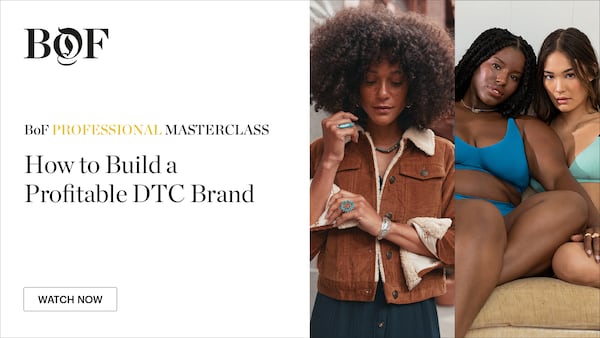
The Business of Fashion
Agenda-setting intelligence, analysis and advice for the global fashion community.

Agenda-setting intelligence, analysis and advice for the global fashion community.

In 2010, the fledgling direct-to-consumer T-shirt brand Marine Layer opened a pop-up shop in San Francisco’s Marina District. It was supposed to be a two-week stint aiming to get customer emails and drive traffic to the brand’s website. The store itself, however, was a success, generating $20,000 in sales. Many customers who stopped by made additional purchases online.
The success of the pop-up prompted the brand to sign a five-year lease in that same space. Today, Marine Layer, a premium price point brand whose products — adorned with its signature multicoloured stripes — range from $40 T-shirts to sweaters for $150 and up, operates 48 stores in 20 US states. Combined, these stores account for around 35 percent of the brand’s annual sales.
Investing in stores early had positive knock-on effects for the brand over the last decade: they served as a key customer acquisition channel, helping Marine Layer limit its spending on social media ads, which have been steadily becoming more costly since 2010. As such, the company hasn’t needed to rely heavily on external funding to grow — it has raised less than $20 million as of end-2022.
“We joked that our only marketing spend was rent,” said Renee Lopes Halvorsen, Marine Layer’s chief marketing officer. “The placement of our stores was a key component of putting ourselves in front of the right customers.”
ADVERTISEMENT
Those early decisions helped Marine Layer first achieve profitability in 2011. That makes it a rarity among digital DTC brands founded around the same time. Back in the early 2010s, conventional wisdom was that new brands should lean heavily into Facebook and Instagram ads to drive traffic, and thus sales, to their online storefronts, since the costs to buy new customers on social media was so cheap.
As the post-Great Recession economy gathered steam, venture capital was readily available. VCs looking to get in on e-commerce 2.0 were eager to pump money into brands that seemed to understand how to connect with consumers online. For founders, the goal was to use online marketing to surpass $100 million in annual sales as quickly as possible. Profitability was an afterthought; many believed that once a brand reached nine figures in revenue, the costs to acquire customers would go down and they would make money on each sale generated from those digital ads.
Some of these brands were rewarded with $1 billion-plus valuations and successful initial public offerings. But profitability remained elusive: competition for social media ad space forced the costs to get new customers to skyrocket, and marketing soon became principal expenses for many direct-to-consumer brands. Costs only went up as these start-ups grew, and many companies’ projections for operating in the black kept getting pushed further into the future. When the economy weakened and borrowing costs rose in 2022, many saw their valuations and share prices plummet.
Brands that have practised more discipline in how they spend money to acquire customers are on a different trajectory. Growth tends to be slower, though some have reached $100 million in annual sales. But they’ve managed to avoid going into the red, and, as a result, had a sturdy war chest when the financial markets buckled in 2022.
The DTC pioneers in this case study — which include intimates brand Meundies and beauty brand Trinny London along with Marine Layer — prioritised profitability from the start. In taking a closer look at each of their paths to growth and the challenges they confronted along the way, this case study identifies pillars of profitability that other DTC brands can apply: making money on every item sold; finding outreach channels that nurture a loyal base of customers who will contribute to sales growth; investing in a cost-effective physical retail strategy that drives new and repeat business; and leveraging the disrupted digital advertising market.
Editor’s Note: This case study was revised on Jan. 17, 2023, to clarify that BoF incorrectly noted a statement about the ageing process from Shira Feuer of Trinny London, which should have read that a person’s eyelids look different when they are 50 than when they are 20.

Start-ups under pressure to operate in the black have logistics and marketing expenses in their sights.

Malique Morris is Direct-to-Consumer Correspondent at The Business of Fashion. He is based in New York and covers digital-native brands and shifts in the online shopping industry.
Apparel start-ups founded on the promise of offering men the perfect T-shirt are proving resilient in an otherwise dreary DTC sector rampant with fire sales, bankruptcies and steep revenue declines.
Apparel brands Knot Standard and Billy Reid are teaming up in a move investors say we may see more of as fashion start-ups seek alternative funding routes to grow their businesses.
Warby Parker, Everlane and other brands are partnering with small, but buzzy fashion labels as an inexpensive way to find new customers, and regain some status with shoppers who have moved on.
The embattled athleisure brand has mounting cash problems, Sourcing Journal says.